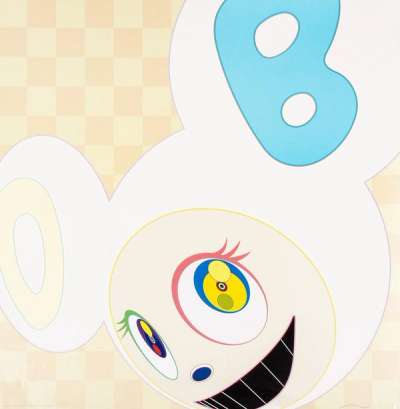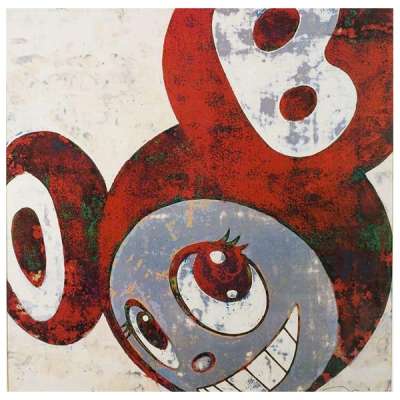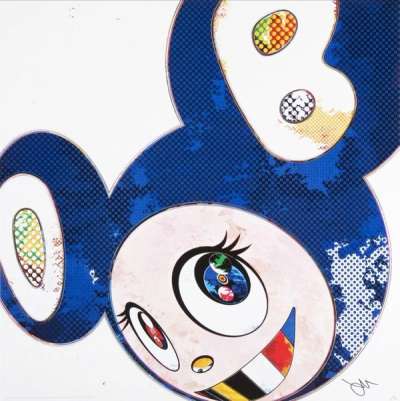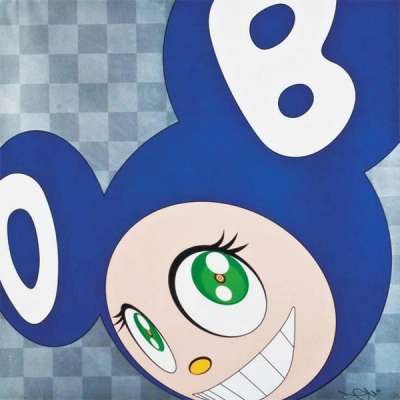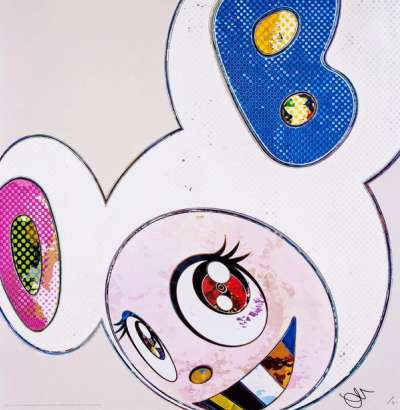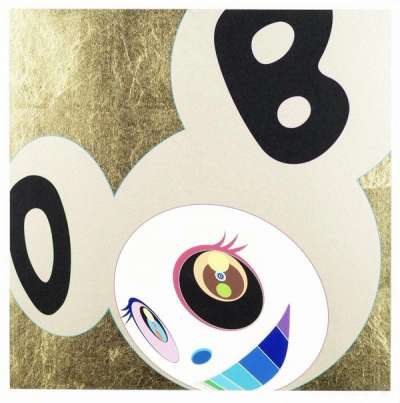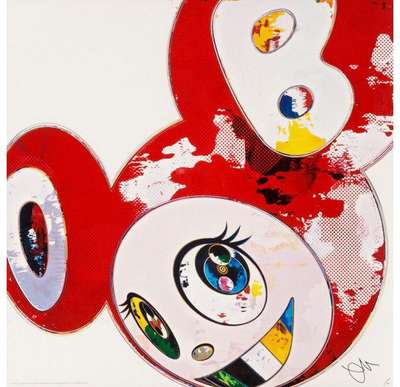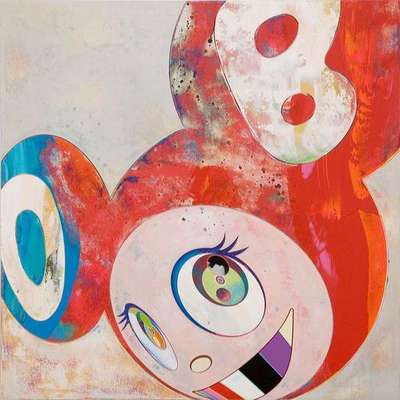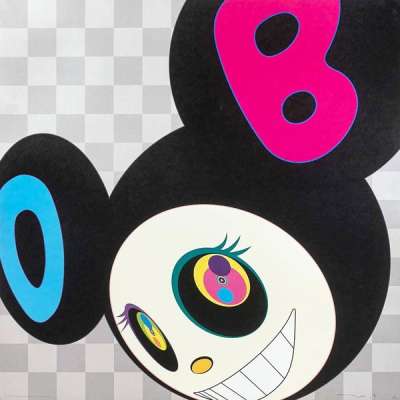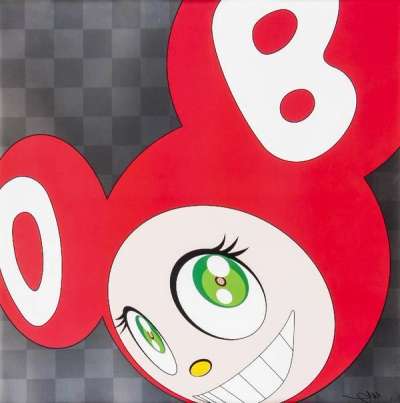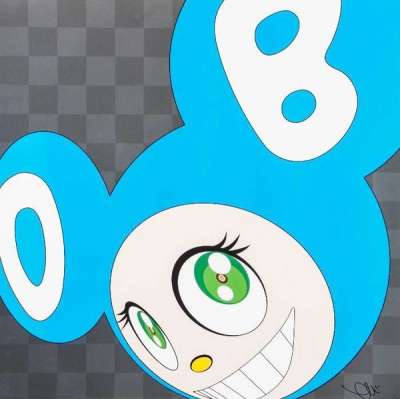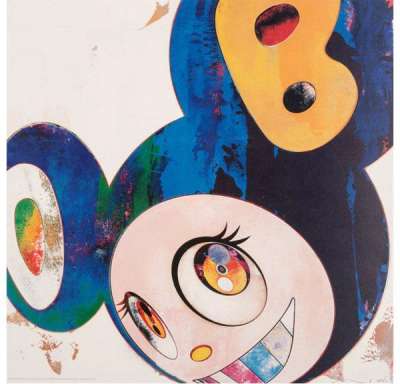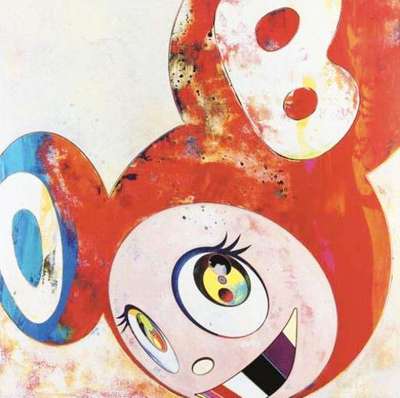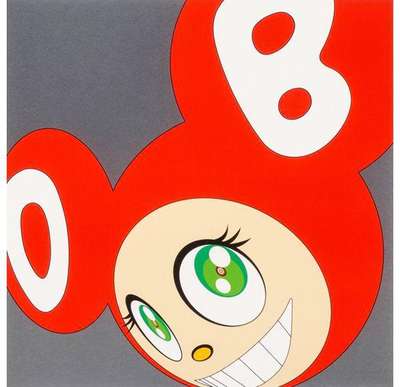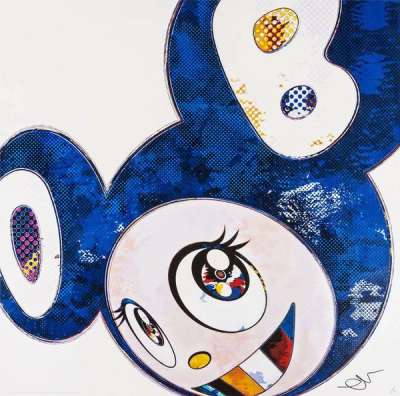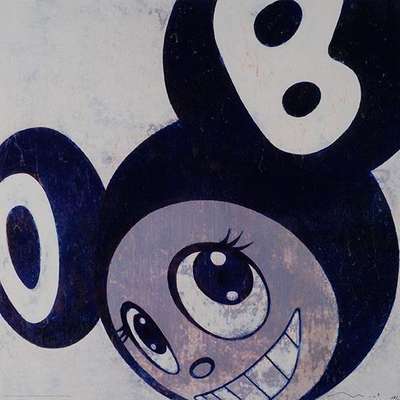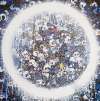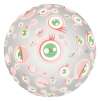And
Then And Then And Then And Then And Then
Takashi Murakami has been called the 'Warhol of Japan'; it is clear why when contemplating his print series, And Then And Then And Then And Then And Then. A series of lithographs created between the 1990s and 2013, the title hints at the obsessiveness of Murakami's serialisation (and variation across colours), redolent of Warhol’s.
Takashi Murakami And Then And Then And Then And Then And Then For sale
And Then And Then And Then And Then And Then Value (5 Years)
With £14874 in the past 12 months, Takashi Murakami's And Then And Then And Then And Then And Then series is one of the most actively traded in the market. Prices have varied significantly – from £355 to £4921 – driven by fluctuations in factors like condition, provenance, and market timing. Over the past 12 months, the average selling price was £1487, with an average annual growth rate of 9.51% across the series.
And Then And Then And Then And Then And Then Market value
Auction Results
| Artwork | Auction Date | Auction House | Return to Seller | Hammer Price | Buyer Paid |
|---|---|---|---|---|---|
 And Then And Then And Then And Then And Then (blue) Takashi Murakami Signed Print | 22 Feb 2023 | Chiswick Auctions | £1,743 | £2,050 | £2,750 |
 And Then The Superflat Method (blue) Takashi Murakami Signed Print | 16 Feb 2023 | Tate Ward Auctions | £638 | £750 | £1,000 |
 And Then The Superflat Method (red) Takashi Murakami Signed Print | 16 Feb 2023 | Tate Ward Auctions | £638 | £750 | £1,000 |
 And Then The Superflat Method (white) Takashi Murakami Signed Print | 11 Jan 2023 | Wright | £1,445 | £1,700 | £2,300 |
 And Then The Polke Method (blue) Takashi Murakami Signed Print | 16 Aug 2022 | Bonhams New York | £2,253 | £2,650 | £3,400 |
 And Then The Polke Method (red) Takashi Murakami Signed Print | 26 May 2022 | Tate Ward Auctions | £1,020 | £1,200 | £1,650 |
 And Then (rainbow) Takashi Murakami Signed Print | 9 Dec 2021 | Phillips London | £3,953 | £4,650 | £6,500 |
 And Then And Then And Then And Then And Then (red) Takashi Murakami Signed Print | 10 Mar 2021 | Christie's New York | £2,295 | £2,700 | £3,600 |
Sell Your Art
with Us
with Us
Join Our Network of Collectors. Buy, Sell and Track Demand
Meaning & Analysis
And Then And Then And Then And Then And Then is a series of lithograph prints by Takashi Murakami. The prints in this collection range from early prints made by the artist at the start of his artistic career in the 1990s, to ones produced in 2013. By 2013, Murakami was an internationally acclaimed artist and designer who had been named one of Time Magazine’s “100 Most Influential People''and had collaborated with notable celebrities and luxury brands such as Kanye West and Louis Vuitton.
Murakami’s obsession with perfection, mechanical repetition and mass production has led to comparisons between the artist and Andy Warhol, the father of the Pop Art movement. Murakami has even been called the ‘Warhol of Japan’ and there are notable similarities between his artistic style and concerns and those of Warhol. After studying ‘nihonga’, a traditional style of Japanese painting at the Tokyo University of Fine Arts and Music, Murakami became disillusioned by the insular and highly political world of fine art. The artist began experimenting with contemporary artistic styles, taking inspiration from ‘otaku’ culture, a subculture rooted in computers and popular culture. His aesthetic was also influenced by anime and manga, which is generally considered to be part of Japan’s ‘low’ culture. Incorporating otaku culture, anime and manga into his artworks meant that Murakami was able to successfully blur the lines between ‘high’ art and ‘low’ culture, much like Warhol did when he made prints of everyday consumer goods like high heel shoes and Campbell’s soup cans. While Murakami is similar to Warhol in this sense, the artist remains unique, especially due to the way in which he fuses influences from the East and West into his art, adopting Western fine art techniques and merging them with Japanese culture and style.
